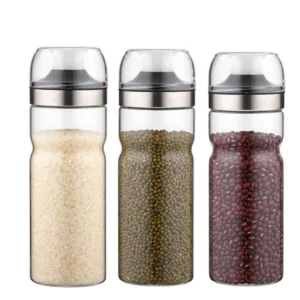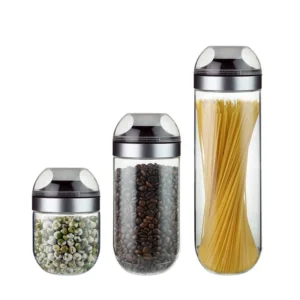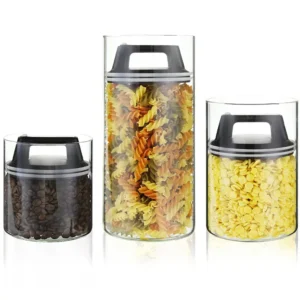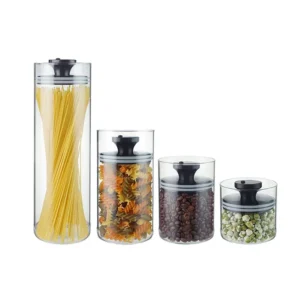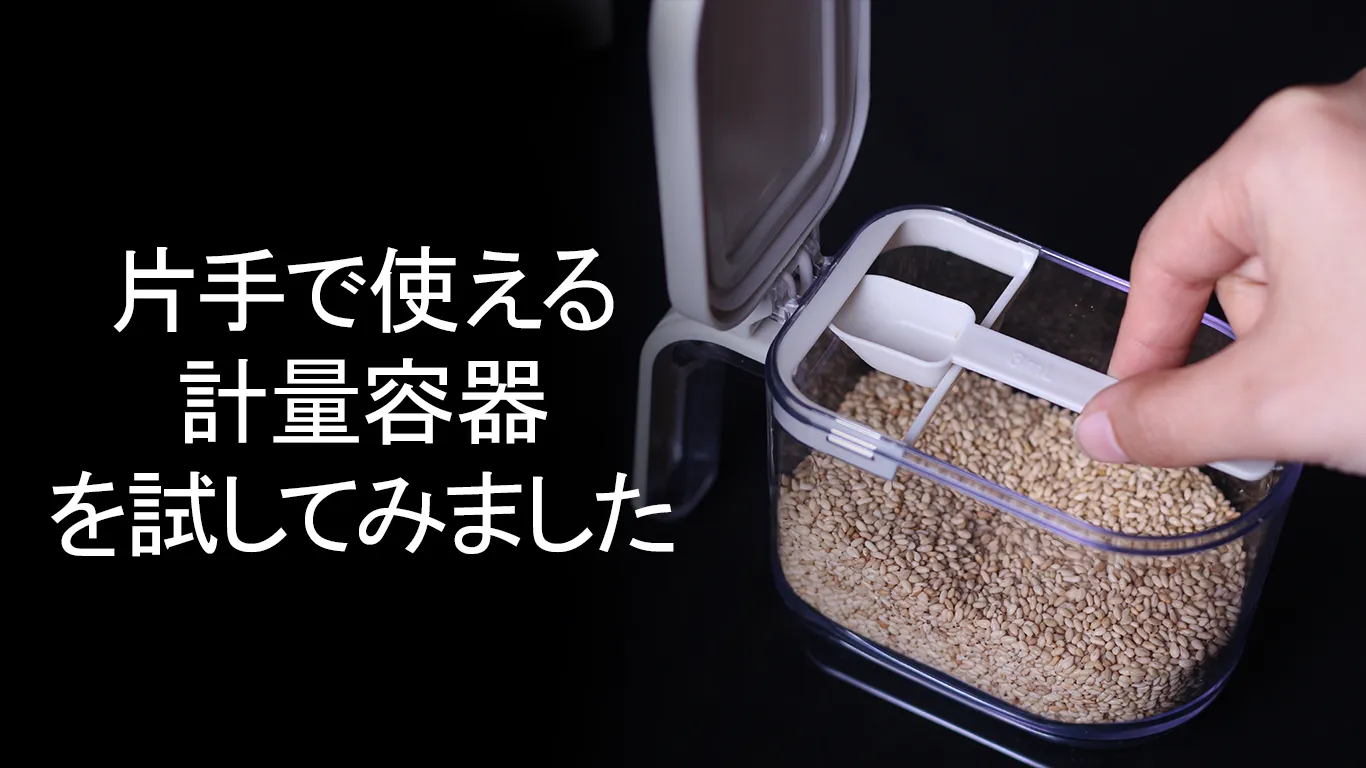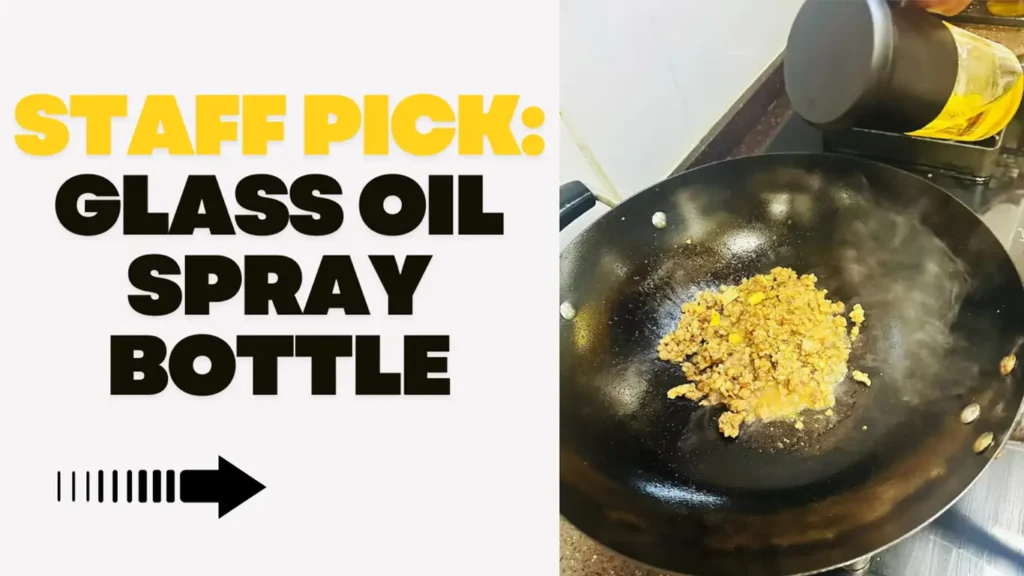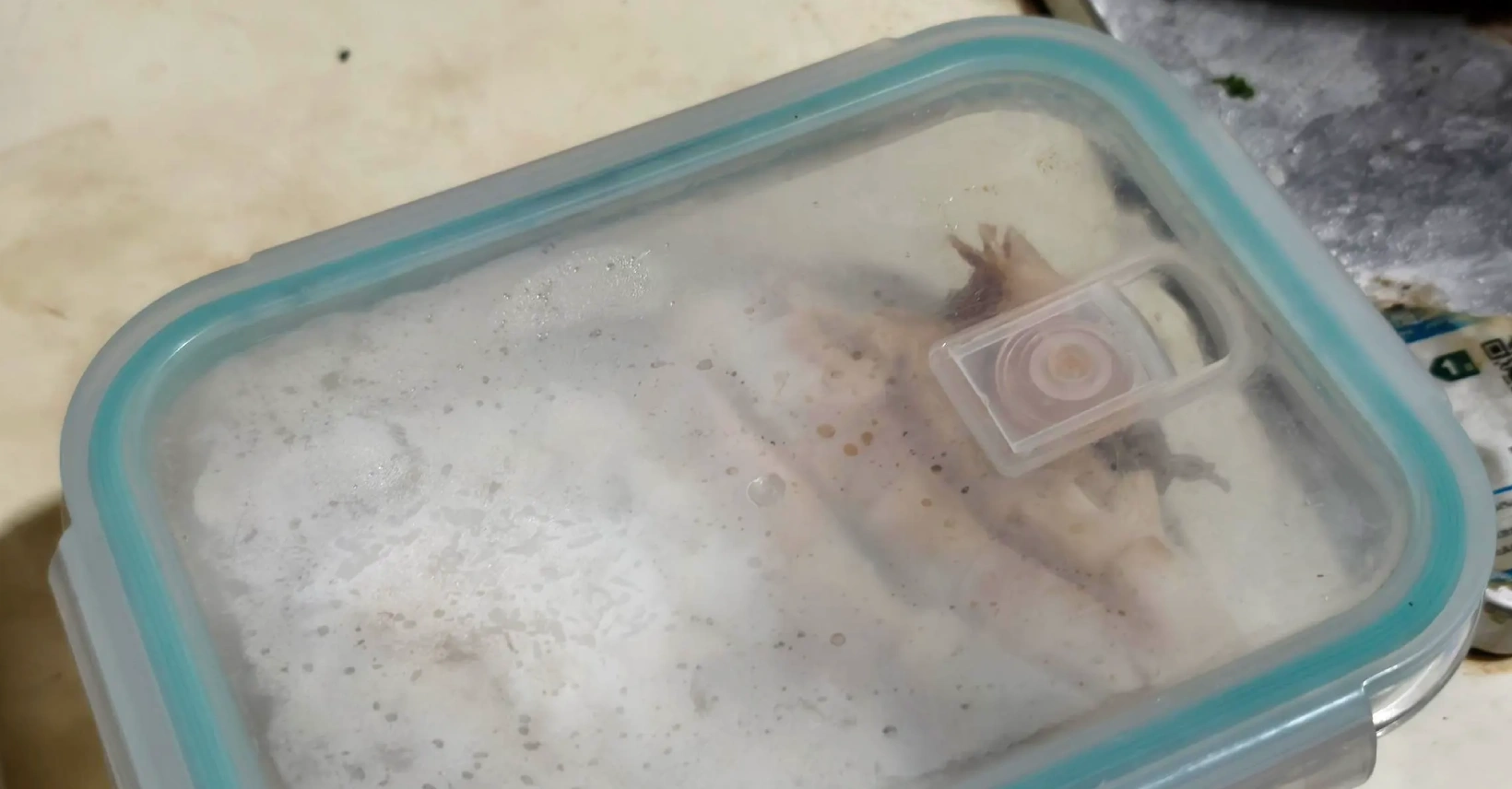Can you microwave glass jars? Maybe we’ve all been there – staring at a glass container, perhaps leftovers from last night’s dinner, and wondering, “Is this safe to put in the microwave?” The kitchen can be a minefield of “can I or can’t I” questions, especially when it comes to heating food. In our fast-paced lives, the microwave is an indispensable tool; however, using the wrong container can lead to anything from a minor inconvenience to a potentially dangerous incident.
The short answer is: Yes, but with significant caveats. Not all glass is created equal, and knowing the difference can prevent a messy (and potentially dangerous) disaster. This comprehensive guide will walk you through everything you need to know about microwaving glass safely. We’ll delve into the science behind why some glass is safe and some isn’t, identify different types of glass you might encounter, highlight the risks of using the wrong kind, and provide essential tips for safe heating. By the end, you’ll be a pro at identifying microwave-safe glass and ensuring your kitchen remains a safe and efficient space.
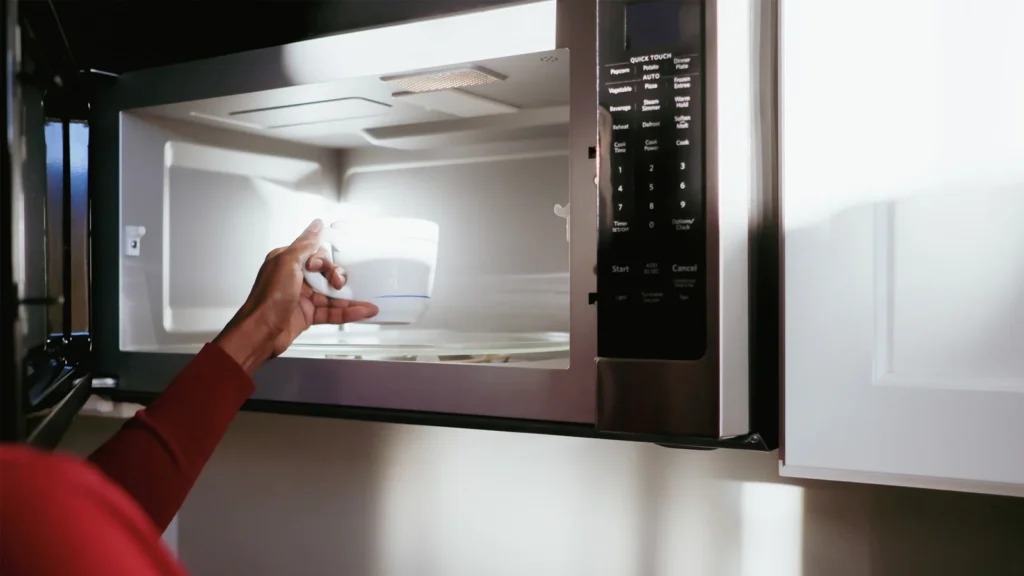
The Basics: Can You Microwave Glass Jars?
Is glass intrinsically microwave safe? To understand whether glass is safe for microwave use, it’s essential to first grasp how microwave ovens actually work and how different materials react to them.
Understanding Microwave Energy and Heat Transfer
Microwaves operate by emitting electromagnetic waves that primarily interact with water molecules present in food. These waves cause the water molecules to vibrate rapidly, generating heat through friction. This is why food heats up, while a porcelain plate, which contains very little water, remains relatively cool.
Given this, glass, which contains no water, would seem like the ideal microwave-safe material, as it shouldn’t absorb the microwave energy and thus shouldn’t heat up. However, the issue isn’t about direct heating by microwaves, but rather the glass’s ability to withstand rapid and uneven temperature changes, a phenomenon known as thermal shock.
The Crucial Role of Different Glass Compositions
Different types of glass are manufactured using varying compositions and processes, which imbue them with distinct properties, particularly their resistance to heat and thermal shock. When food heats up in a glass container, the food transfers heat to the glass. If the glass heats up too quickly or unevenly, or if it’s subjected to a sudden temperature difference (e.g., cold glass straight into a hot microwave, or hot glass placed on a cold surface), the material expands and contracts at different rates, creating internal stress that can lead to cracking or shattering.
Different Compositions of Glass:
Borosilicate Glass (e.g., food storage containers, lab glass):
- Composition: Approximately 70-80% silica (SiO₂) and 8-15% boric oxide (B₂O₃), with smaller amounts of sodium oxide and aluminum oxide.
- Key Property: Boric oxide significantly lowers the glass’s Coefficient of Thermal Expansion (CTE).
Soda-Lime Glass (e.g., standard drinking glasses, jars, window panes):
- Composition: Predominantly 70-75% silica (SiO₂), 12-17% sodium oxide (Na₂O) (soda), and 8-15% calcium oxide (CaO) (lime).
- Key Property: Has a relatively high Coefficient of Thermal Expansion (CTE).
Tempered Glass (often a treated soda-lime glass, e.g., some Pyrex sold in the U.S.):
- Composition: Typically, the same soda-lime glass composition as above.
- Key Property: The glass undergoes a thermal or chemical treatment that creates compressive stress on the surface. This process enhances strength and resistance to moderate thermal shock, but its base CTE remains high.
Crystal/Lead Glass:
- Composition: Contains lead oxide (PbO) (often 10-30%) or other metal oxides like barium or zinc oxide.
- Key Property: Presence of lead (toxic) and other metals (causes arcing). Generally poor thermal shock resistance.
What is CTE?
The chemical composition of glass directly determines its Coefficient of Thermal Expansion (CTE).
- What is CTE? It’s a measure of how much a material expands or contracts in response to a change in temperature.
- Why it matters: When glass heats up unevenly or rapidly, different parts expand at different rates. If the CTE is high (as in soda-lime glass), this differential expansion creates significant internal stress.
- Thermal Shock Resistance: A lower CTE means the glass expands and contracts less, reducing internal stress and making it highly resistant to thermal shock (cracking or shattering due to rapid temperature changes). This is why borosilicate glass, with its low CTE due to boric oxide, is excellent for microwave use, while high-CTE soda-lime glass is not.
Decoding the “Microwave Safe” Symbol
The easiest and most reliable way to determine if a glass item is safe for microwave use is to look for the “microwave-safe” symbol. This symbol often looks like wavy lines, a microwave oven icon, or sometimes a combination of a square with wavy lines above it. You’ll typically find this symbol embossed on the bottom of dishes, on the product’s packaging, or in the manufacturer’s instructions.
The Golden Rule: Always look for this symbol! If it’s not there, you should proceed with extreme caution or, ideally, avoid microwaving the item altogether. Manufacturers specifically test and certify products with this label for microwave safety.

Navigating the Glass Aisle: Is it safe to microwave glass
Not all glass is created equal, and knowing the differences can save you from a messy and potentially dangerous situation. Let’s break down the common types of glass and their microwave safety.
Borosilicate Glass (The Gold Standard)
- Examples: Popular brands like Pyrex, EasyLife, Corningware, and laboratory glassware are often made from borosilicate glass.
- Why it’s safe: Borosilicate glass is specifically engineered for its high resistance to thermal shock. It has a very low coefficient of thermal expansion, meaning it expands and contracts minimally when exposed to temperature fluctuations. This makes it incredibly robust and unlikely to crack or shatter under the rapid heating and cooling cycles of a microwave.
- Use cases: This type of glass is ideal for baking dishes, casseroles, and food storage containers that will go from the refrigerator or freezer directly into the oven or microwave.
Tempered Glass (Generally Safe with Care)
- Examples: Many everyday drinking glasses, some less expensive food storage containers, and car windows are made from tempered glass.
- Why it’s generally safe: Tempered glass undergoes a process of extreme heating and rapid cooling during manufacturing, which makes it much stronger and more heat-resistant than ordinary glass. It’s designed to withstand significant impacts and temperature changes, but it’s not as tolerant to sudden, extreme thermal shock as borosilicate glass.
- Caution: While generally safe for microwave use, tempered glass can still shatter if subjected to severe thermal shock. For instance, taking a very hot dish out of the microwave and immediately running cold water over it, or placing it on a cold, wet surface, can cause it to explode into small, relatively harmless pieces (unlike untempered glass, which breaks into sharp shards).
Soda-Lime Glass (Often NOT Microwave Safe)
- Examples: This is the most common type of glass used for standard drinking glasses, glass jars (like those for jam, pickles, or pasta sauce), and many older glass dinnerware sets.
- Why it’s risky: Soda-lime glass has a higher coefficient of thermal expansion and much lower resistance to thermal shock compared to borosilicate or tempered glass. This means it expands and contracts significantly with temperature changes. When heated rapidly or unevenly in a microwave, the stress from these differing expansion rates can easily cause it to crack, shatter, or even explode.
- Rule: Unless a soda-lime glass item is explicitly labeled “microwave safe” (which is rare for things like old jam jars), you should assume it is NOT microwave safe and avoid using it.
Crystal and Lead Glass (Absolutely NOT Microwave Safe)
- Examples: This category includes decorative bowls, antique dishes, fine crystal stemware, and often older, ornate glassware.
- Why it’s dangerous: Crystal glass typically contains lead or other metals (like barium or zinc) to give it clarity, brilliance, and weight. When heated in a microwave, these metals can leach into your food, posing health risks. Furthermore, the presence of metals can cause arcing (sparks) inside the microwave, which can damage the appliance and potentially cause a fire. Crystal also has poor thermal shock resistance, making it prone to shattering.
Glass with Metallic Accents or Decorative Elements (A Major No-Go)
- Examples: Any glass item with gold or silver rims, metallic patterns, paint that contains metal pigments, or glued-on embellishments.
- Why it’s a hazard: Regardless of the type of glass, any metallic decoration will cause arcing and sparks inside the microwave. This phenomenon occurs because the microwave energy interacts with the metal, creating an electric current that can lead to visible sparks, a burning smell, and even fire. It can also permanently damage your microwave’s magnetron, the component that generates the microwaves. Always keep metals out of the microwave.
The Hidden Dangers: What Can Go Wrong?
Using the wrong type of glass in your microwave isn’t just about whether your food gets hot; it can lead to a range of dangers that affect your safety and your appliance.
The Shock of the Hot and Cold: Thermal Shattering
This is the most common and dramatic risk. As discussed, thermal shock occurs when a material undergoes rapid temperature changes, causing different parts of the material to expand or contract at different rates. For glass, this creates immense internal stress.
- Scenario 1: Taking a cold glass dish directly from the refrigerator or freezer and placing it immediately into a hot microwave. The outer layers heat up and expand quickly, while the inner layers remain cold and contracted, leading to a fracture.
- Scenario 2: Removing a very hot glass dish from the microwave and placing it on a cold countertop, a wet surface, or running cold water over it. The rapid cooling of the heated glass can cause it to shatter. When glass shatters in the microwave, it can create a dangerous mess of sharp shards, potentially injuring anyone nearby or contaminating your food.
Leaching of Harmful Chemicals
This risk primarily applies to older glass, lead crystal, or glass not specifically designed for food use. Some older glass products, especially decorative ones, may contain lead, cadmium, or other heavy metals in their composition or in decorative paints/glazes. When these items are heated, especially with acidic foods, these harmful chemicals can leach into your food, posing serious health risks. Always use food-grade, microwave-safe containers.
Uneven Heating of the Glass Itself
While microwaves primarily heat water molecules in food, the glass container itself can absorb some of the microwave energy, particularly if it’s not made for microwave use or if there’s no food inside. This can lead to uneven heating within the glass, creating hot spots and increasing the risk of thermal stress and shattering, even if the temperature difference isn’t extreme.
Damage to Your Microwave Oven
Using unsafe glass can cause direct harm to your appliance:
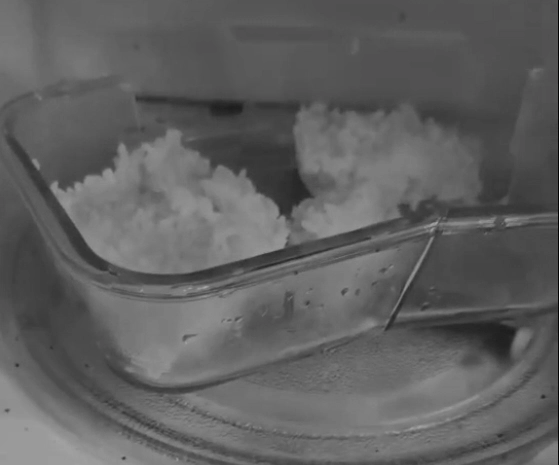
- Arcing and Sparks: As mentioned, metallic decorations or lead in crystal glass will cause arcing (electrical sparks) inside the microwave. This is not only a fire hazard but can also permanently damage the microwave’s magnetron, the component responsible for generating the microwaves. Repairs can be costly, or you may need to replace the entire oven.
- Physical Damage: If glass shatters violently inside the microwave, the force of the explosion and the flying shards can physically damage the interior walls, turntable, or door mechanism, rendering the appliance unsafe or unusable.
Best Practices for Microwaving Glass Safely
Now that you understand the risks, let’s focus on how to use glass in your microwave safely, ensuring peace of mind and delicious, heated meals.
Always, Always Check for the “Microwave Safe” Label
This cannot be stressed enough. If a glass container is designed for microwave use, it will almost certainly have a “microwave-safe” symbol or explicit labeling from the manufacturer. If there’s no label, err on the side of caution and assume it’s not microwave safe. Don’t gamble with your safety or your appliance.
Avoid Extreme Temperature Changes
- From cold to hot: If you’re using a glass dish directly from the refrigerator or freezer, allow it to sit at room temperature for a few minutes (10-15 minutes is usually sufficient) before placing it in the microwave. This helps reduce the initial thermal shock.
- From hot to cold: After heating, remove the hot glass carefully. Avoid placing it directly on a cold, wet surface (like a cold countertop or a sink filled with water). Use a trivet, a dry hot pad, or a wooden surface. Do not immediately run cold water over a hot glass dish.
Ensure the Glass is Not Empty
Microwaves are designed to heat food (specifically, the water in food). When you microwave an empty glass container, there’s no food to absorb the microwave energy. This energy can then be absorbed by the glass itself, causing it to heat up rapidly and unevenly, significantly increasing the risk of shattering or superheating the glass, making it dangerously hot to touch. Always ensure there’s food or liquid in the container.
Use Appropriate Cookware Size
Make sure the glass dish fits comfortably inside your microwave oven and can rotate freely on the turntable (if your microwave has one). Overloading the microwave or using a dish that’s too large can lead to uneven heating of the food and the container, increasing stress on the glass.
Monitor Your Glassware During Heating
Never leave the microwave unattended, especially when heating something new or something you’re unsure about.
- Listen: Pay attention to any unusual sounds like cracking, popping, or sizzling.
- Watch: Look for sparks (arcing) or any signs of smoke. If you notice any of these alarming signs, immediately stop the microwave, unplug it, and do not open the door until the situation has settled. Allow the item to cool completely before attempting to remove it.
Inspect Glass for Cracks or Chips
Before each use, quickly inspect your glass containers for any existing cracks, chips, or damage. Even a tiny crack can become a weak point that significantly reduces the glass’s resistance to thermal shock, making it much more likely to shatter in the microwave. Discard any damaged glass cookware immediately.
Where to buy glass jars?
For decades, EasyLife Housewares has been a leader in manufacturing and supplying high-quality glass jars that are both functional and beautiful. We offer a diverse selection to meet the rigorous demands of various industries.
Our commitment to strict production and quality control means every glass container we produce meets world-class standards. You’ll find our products, including our borosilicate glass jars and stylish storage solutions, deliver the perfect blend of toughness, safety, and style for your business.
Glass is microwave safe
-
1100ml Air-tight Borosilicate Glass Dry Food Storage Jar with Lid
-
Clear Containers for Food Storage Glass Storage Bottles
-
Glass Food Storage Jars Wholesale Glass Canister Set
-
Glass Food Storage Jars Small Glass Jars with Lids
-
Clear Food Containers with Lids | Airtight Glass Meal Prep & Storage Set
-
Eco Friendly Food Containers with Tempered Glass Top
Beyond Glass: Other Microwave-Safe Materials
While this guide focuses on glass, it’s helpful to know about other common materials that are safe for microwave use. Having alternatives ensures you always have a suitable container for your heating needs.
Ceramics
- Safe: Most glazed ceramic dishes, such as coffee mugs, dinner plates, and ceramic bowls, are generally microwave safe. Like glass, they don’t contain water and are designed to withstand moderate heat.
- Caution: Always check for metallic glazes, painted decorations containing metal, or lead-based paints, which can cause arcing and leach chemicals. Hand-made or unglazed pottery should be used with caution, as it may absorb water and heat up excessively.
Plastics
- Safe: Only plastics explicitly labeled “microwave safe” should be used. Look for the “microwave safe” symbol (often a microwave oven icon or wavy lines) or phrases like “microwave safe” or “BPA-free” on the product. These plastics are engineered to withstand microwave temperatures without melting or leaching harmful chemicals into food.
- Risky: Avoid single-use plastic containers (like those from yogurt, butter, or deli meats), plastic storage bags (unless labeled for microwave use), and plastic wrap (unless specified). These are not designed for heating and can melt, warp, or release chemicals when exposed to microwave energy.
Paper Products
- Safe: Plain paper plates, paper towels, and parchment paper are generally safe for short-term heating or covering food to prevent splattering.
- Caution: Avoid brown paper bags (like lunch bags, as they can catch fire), waxed paper (the wax can melt), and recycled paper products that may contain tiny metal fragments from the recycling process. For prolonged heating, paper can become hot and weak.
Silicone
- Safe: Silicone is an excellent microwave-safe material. It’s highly heat-resistant, flexible, and doesn’t react with food. Silicone bakeware, storage containers, and cooking mats are very popular for microwave use.
FAQ
How to tell if it’s Borosilicate glass?
Visually, borosilicate glass tends to be very clear and colorless, whereas soda-lime glass may have a slight greenish or bluish-green tint, especially when viewed from the edge. For a more definitive test, borosilicate glass will appear to “disappear” or become almost invisible when submerged in liquids with a similar refractive index, such as mineral oil. Ultimately, the most reliable method is to check for clear labeling from a reputable manufacturer.
How to tell if a glass jar is heat-safe?
To determine if a glass jar is heat-safe for use in a microwave or oven, the most reliable method is to check for explicit labeling by the manufacturer; look for symbols or text like “microwave-safe” or “oven-safe.” If no such labeling exists, you can perform a simple microwave test: place the empty glass jar alongside a known microwave-safe cup filled with water in the microwave and heat on high for one minute; if the jar remains cool or only slightly warm while the water heats up, it’s generally considered microwave-safe, as it’s not absorbing the microwave energy directly.
How to warm up a glass jar?
To safely warm a glass jar, you have a few options depending on your needs. For empty jars, a water bath is highly recommended: place them in a pot, cover with water, and slowly bring it to a simmer or boil to gradually warm the glass. You can also place empty jars in a cold oven and let them heat up with the oven. If warming a jar with food in the microwave, ensure it’s labeled “microwave-safe,” remove any metal, and heat on medium to low power in short bursts. For oven use with food, only use jars made from borosilicate or tempered glass, placing them in a cold oven and allowing them to heat up slowly. Always avoid sudden temperature changes to prevent cracking.
Do microwaving jars sterilize them?
While some sources suggest microwaving can sanitize glass jars, it’s generally not considered a reliable method for full sterilization, especially for canning or long-term food preservation. Microwaves heat unevenly, and achieving the consistent high temperatures required to kill all harmful bacteria, including botulism spores, is difficult to guarantee. For true sterilization, which is crucial for safe food preservation, methods like boiling in a water bath, using an oven (with proper temperature control for extended periods), or a dishwasher with a “sanitize” cycle are more effective and widely recommended by food safety experts. If you do microwave a jar to sanitize it for short-term use (like for fresh-made jam consumed quickly), it’s best to ensure it’s wet inside to create steam, which helps in the sanitization process.
Will microwaves go through glass?
Yes, microwaves are designed to pass through materials like glass, plastic, and paper, which is why these materials are commonly used for microwave-safe dishes. The microwave energy primarily interacts with water molecules, fats, and sugars within the food itself, causing them to vibrate and generate heat. Glass, being largely non-polar and non-conductive, does not readily absorb microwave energy, allowing the waves to pass through and heat the contents of the jar. However, even though microwaves go through glass, rapid temperature changes can still cause non-microwave-safe glass (like ordinary soda-lime glass) to crack or shatter due to thermal shock, as it expands and contracts unevenly.
Conclusion: Can You Microwave Glass?
Navigating the world of microwave-safe containers can seem daunting, but by understanding the basics of how microwaves work and the properties of different materials, you can make informed and safe choices in your kitchen.
Enhance your brand with our reliable, durable, and attractive glass containers. Partner with EasyLife today!

